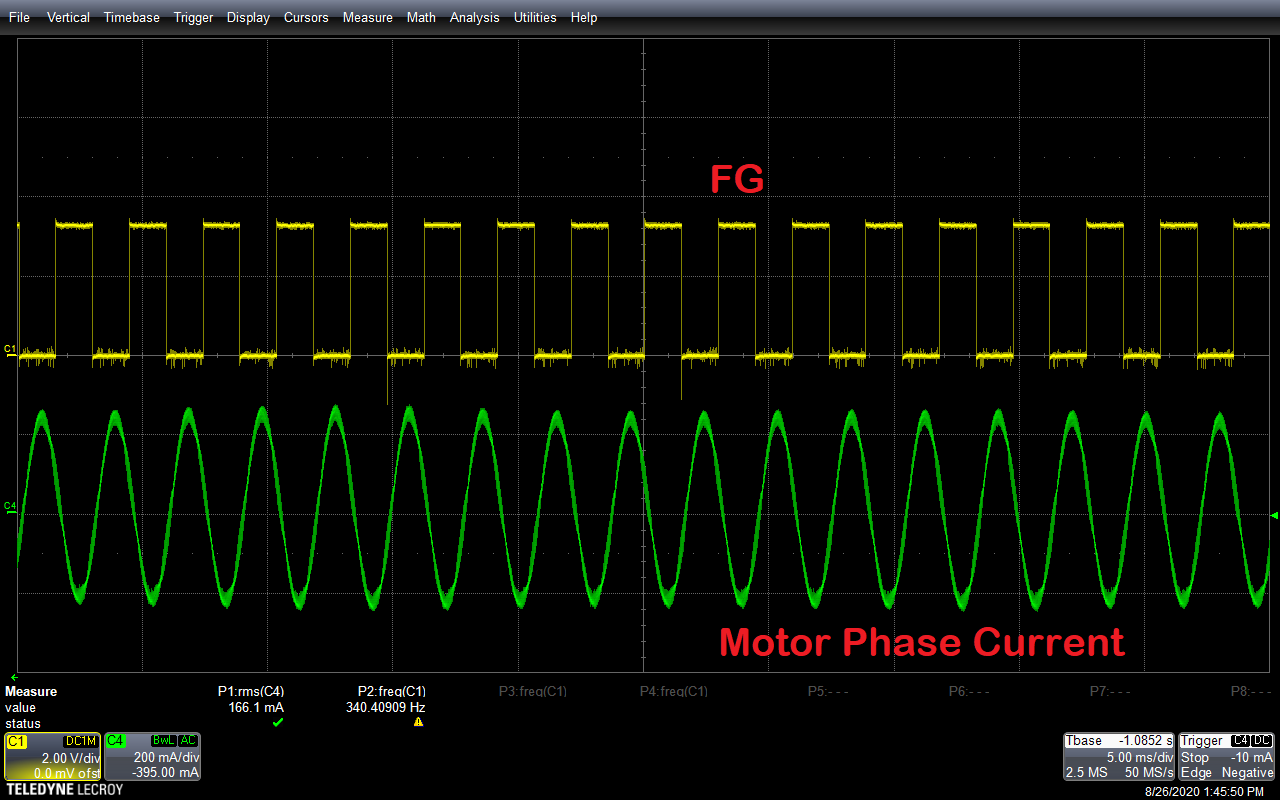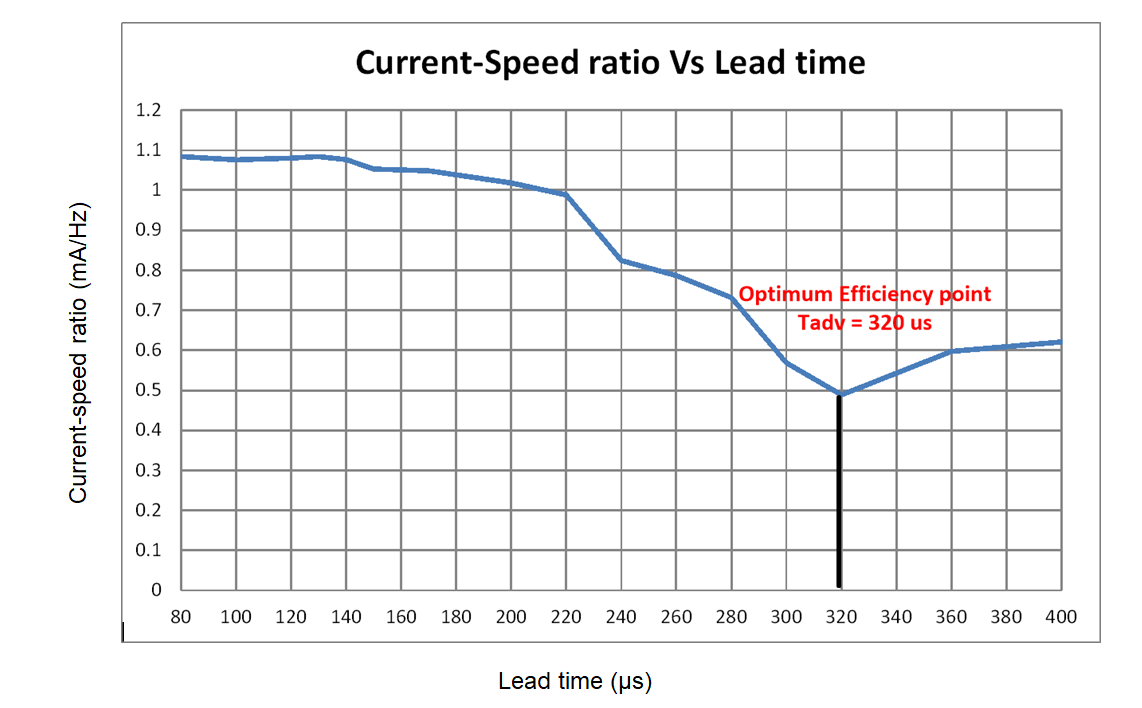SLAA561 October 2020 DRV10974 , DRV10975 , DRV10983 , DRV10983-Q1 , DRV10987
2 Concept
BLDC motors operate efficiently when the stator magnetic flux and rotor magnetic flux are in quadrature alignment (90°). To achieve this 90° angle between the stator and rotor flux, the BEMF voltage must be aligned with the phase current.
This alignment between the BEMF voltage and phase current can be achieved by adjusting the lead angle. It is important to know the target speed or torque of the motor because with variation in speed or torque, the BEMF voltage and phase current get misaligned for a fixed lead angle. Lead angle must be adjusted when an operating condition, such as speed and load, is changed to operate the motor at optimal efficiency. At the target speed, when the BEMF voltage and phase current are aligned, the motor draws least amount of phase current and the efficiency is optimized.
Below are the steps to tune lead angle:
- While operating in closed loop, set the speed command to achieve the desired operating speed where the efficiency needs to be optimized.
- Sweep the lead angle around the
programmed lead angle and measure the motor phase current (rms) and motor speed (Hz)
for each value of lead angle. It is recommended to measure the motor speed by
measuring the frequency of FG signal for accurate results. Figure 2-1 shows the phase current and FG plot. Measure the RMS value of phase current and
frequency of FG signal.
 Figure 2-1 FG and Phase
current
Figure 2-1 FG and Phase
current - Calculate the ratio of phase current over motor speed. Optimum efficiency is achieved at the lead angle where the ratio of phase current over speed is lowest. At this point, the estimated BEMF will be almost equal to programmed/measured BEMF of the motor.
Here is an example of tuning lead angle for a sample BLDC motor.
Rated speed of the sample motor is 340 Hz (Electrical Speed). Speed command is set to 100% duty cycle as the efficiency needs to be optimized at 340 Hz. Table 2-1 shows the experimental phase current, speed and their ratio after sweeping the lead time from 80 µs to 400 µs. DRV10x takes lead time as input and converts lead time to lead angle. Data points in Table 2-1 are plotted in Figure 2-2. Figure 2-2 shows the current-speed ratio Vs Lead time.
| Lead time (µs) | Phase current (mA) | Speed (Hz) | Phase current/Speed (mA/Hz) |
|---|---|---|---|
| 80 | 326.6 | 301.3 | 1.084 |
| 100 | 324.2 | 301.2 | 1.076 |
| 120 | 325.4 | 301.2 | 1.080 |
| 130 | 326.7 | 301.4 | 1.084 |
| 140 | 325.5 | 302.3 | 1.077 |
| 150 | 319.1 | 303.1 | 1.053 |
| 170 | 317.0 | 302.2 | 1.049 |
| 200 | 310.5 | 305 | 1.018 |
| 220 | 302.4 | 306 | 0.988 |
| 240 | 260.2 | 315.6 | 0.824 |
| 260 | 250.3 | 318 | 0.787 |
| 280 | 235.6 | 322 | 0.732 |
| 300 | 191.0 | 335.9 | 0.569 |
| 320 | 166.1 | 340 | 0.489 |
| 360 | 237.7 | 398 | 0.597 |
| 400 | 251.0 | 403 | 0.623 |
 Figure 2-2 Current-Speed ratio Vs Lead
time
Figure 2-2 Current-Speed ratio Vs Lead
timeThe lowest current-speed ratio is achieved at 320 µs. At this operating point, minimum load current is drawn by the motor. This will be the optimum efficiency point at 340 Hz. Above 320 us we see the speed and phase current increasing rapidly. This is because the motor is in the field weakening region where the rotor magnetic flux gets weakened with increase in phase current and motor speed increases above the rated speed. It is not recommended to operate DRV10x devices in field weakening region for applications sensitive to acoustic noise because the phase current might be distorted and can also reduce the life span of the motor.